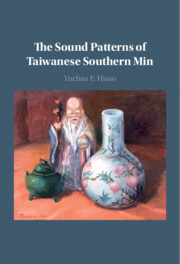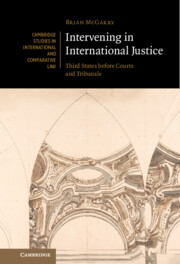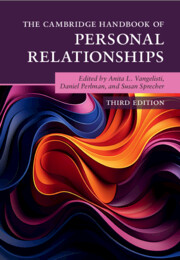Refine search
Actions for selected content:
3386782 results
The Big Picture as an Approach to the Study of International Relations
- Thinking With and Beyond Barry Buzan
- Coming soon
-
- Expected online publication date:
- February 2026
- Print publication:
- 28 February 2026
-
- Book
- Export citation
Mental Illness Stigma and the Moral and Social Community
- Coming soon
-
- Expected online publication date:
- February 2026
- Print publication:
- 28 February 2026
-
- Book
- Export citation

Extremal Graph and Hypergraph Theory
- With Ramsey Theory
- Coming soon
-
- Expected online publication date:
- February 2026
- Print publication:
- 28 February 2026
-
- Book
- Export citation

The Cambridge Companion to Electronic Dance Music
- Coming soon
-
- Expected online publication date:
- February 2026
- Print publication:
- 28 February 2026
-
- Book
- Export citation

Calendar, Cult, and Law in Rome to the Age of Augustus
- Coming soon
-
- Expected online publication date:
- February 2026
- Print publication:
- 28 February 2026
-
- Book
- Export citation
Romanticism Bewitched
- Witchcraft, Revolution and the Female Demonic
- Coming soon
-
- Expected online publication date:
- February 2026
- Print publication:
- 01 April 2027
-
- Book
- Export citation

The Sound Patterns of Taiwanese Southern Min
- Coming soon
-
- Expected online publication date:
- February 2026
- Print publication:
- 28 February 2026
-
- Book
- Export citation

Intervening in International Justice
- Third States before Courts and Tribunals
- Coming soon
-
- Expected online publication date:
- February 2026
- Print publication:
- 28 February 2026
-
- Book
- Export citation

The Cambridge Handbook of Victim Engagement in Transitional Justice
- Coming soon
-
- Expected online publication date:
- February 2026
- Print publication:
- 28 February 2026
-
- Book
- Export citation

Order, Authority, Nation
- Neo-Socialism, Fascism, and Political Conversion in Interwar France
- Coming soon
-
- Expected online publication date:
- February 2026
- Print publication:
- 28 February 2026
-
- Book
- Export citation
Broken Cycle
- World Politics in the Age of Dissent
- Coming soon
-
- Expected online publication date:
- February 2026
- Print publication:
- 01 April 2027
-
- Book
- Export citation
Human Flourishing and the Firm
- Virtue, Strategy, and Deliberation
- Coming soon
-
- Expected online publication date:
- February 2026
- Print publication:
- 28 February 2026
-
- Book
- Export citation
Democratic Drain
- Global Migration and the Struggle for Democracy
- Coming soon
-
- Expected online publication date:
- February 2026
- Print publication:
- 28 February 2026
-
- Book
- Export citation

The Italian Renaissance
- A Cultural History
- Coming soon
-
- Expected online publication date:
- February 2026
- Print publication:
- 28 February 2026
-
- Book
- Export citation

German as a Heritage Language
- Contact, Variation and Maintenance
- Coming soon
-
- Expected online publication date:
- February 2026
- Print publication:
- 28 February 2026
-
- Book
- Export citation

Language Teacher Educators' Emotions
- International Perspectives
- Coming soon
-
- Expected online publication date:
- February 2026
- Print publication:
- 28 February 2026
-
- Book
- Export citation

The Cambridge Handbook of Personal Relationships
- Coming soon
-
- Expected online publication date:
- February 2026
- Print publication:
- 28 February 2026
-
- Book
- Export citation
The Search for a Science of Verse, 1880 to the Present
- Coming soon
-
- Expected online publication date:
- February 2026
- Print publication:
- 28 February 2026
-
- Book
- Export citation
The Aesthetics of Risk in Franco-East Asian Literatures
- Coming soon
-
- Expected online publication date:
- February 2026
- Print publication:
- 28 February 2026
-
- Book
- Export citation
Handbook of CTG Interpretation
- From Patterns to Physiology
- Coming soon
-
- Expected online publication date:
- February 2026
- Print publication:
- 01 April 2027
-
- Book
- Export citation
